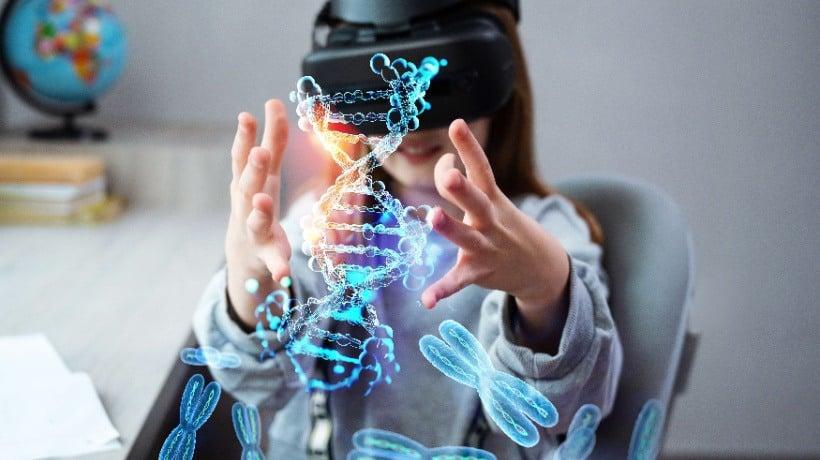VR/AR in Education: Evaluating Their Impact and Effectiveness in modern Learning
Virtual Reality (VR) and Augmented Reality (AR) are no longer confined to gaming and entertainment—they are redefining education as we certainly know it. From immersive historical reenactments to virtual science labs, these interactive technologies are gaining traction in classrooms worldwide. But how effective are VR/AR solutions? Read on as we evaluate their impact, share success stories, and provide actionable tips for educators eager to harness the power of immersive learning.
What are VR and AR in Education?
Virtual Reality (VR) creates a fully immersive digital environment, allowing students to engage in interactive simulations, hands-on learning, and virtual field trips that would otherwise be impossible.
Augmented Reality (AR) overlays digital facts—text, images, or 3D models—onto the real world, enriching traditional lessons with engaging visualizations and interactive exercises.
- VR Exmaple: Walking through ancient Rome using a VR headset.
- AR Example: Viewing a 3D beating heart model layered onto a biology textbook using a tablet.
Key Benefits of VR/AR in Modern Learning
Integrating VR and AR in education offers transformative advantages that enhance the teaching and learning experience.
- Increased Engagement: Immersive environments capture students’ attention and cater to diverse learning styles.
- Enhanced Retention: Studies show that experiential learning boosts memory recall compared to traditional lectures.
- Safe Experimentation: Virtual labs and simulations allow students to learn without safety risks.
- Accessibility: VR/AR can break down barriers for learners with special needs, offering tools that support a wider range of abilities.
- Immediate Feedback: many VR/AR platforms provide instant feedback, fostering a deeper understanding of concepts.
- Global Reach: Connects classrooms across continents,enabling cultural exchange and collaborative projects in real time.
Evaluating the Effectiveness of VR/AR in Education
Research and real-world applications indicate that VR/AR technologies have a notable positive impact on student outcomes:
Research Highlights
- Better Knowledge Retention: A 2023 study published in Educational Technology Research and Progress found that students using VR for science lessons showed a 30% increase in content retention compared with traditional methods.
- Higher Engagement Rates: A Pearson survey revealed that 78% of students reported higher enthusiasm and motivation in VR-enhanced classrooms.
- Improved Learning Outcomes: Teachers integrating AR into math and language learning reported improved test scores, particularly among students who struggle with conventional teaching techniques.
Challenges to Consider
- Cost and Accessibility: High-quality VR headsets and AR devices may be expensive,limiting widespread adoption in underfunded schools.
- Teacher Training: Successful implementation requires proper teacher training and curriculum integration.
- Content Availability: The development of age-appropriate and curriculum-aligned content is still catching up with hardware advances.
Real-World Case Studies: VR/AR Transforming Classrooms
1. Google Expeditions in High Schools
Hundreds of schools across the globe have introduced Google Expeditions,enabling students to embark on VR field trips. learners have virtually visited the International Space Station and explored the Great Barrier Reef—all from their classroom chairs—leading to higher class participation and improved test results.
2. AR Anatomy Lessons at Case Western Reserve university
Medical students using Microsoft HoloLens interact with 3D anatomical models, manipulating organs and tissues. This hands-on approach boosts comprehension of complex biological systems and reduces the need for physical specimens.
3. VR chemistry Labs in Remote Education
Amid the shift to online learning, several universities equipped students with VR-enabled chemistry lab simulations. These allowed for safe experimentation and minimized disruption to practical coursework during pandemics.
Frist-Hand Experiences: Voices from the Classroom
Student Perspective
“Using VR in history class took me right into ancient civilizations. It wasn’t just reading about it—I was there, walking the streets of pompeii! I remember way more now than with any textbook.”
– Maya,10th Grade Student
Educator Insight
“AR has made abstract concepts in physics tangible. Watching students actively explore and interact with electromagnetic fields has led to ‘aha!’ moments I rarely saw in traditional lessons.”
– Mr. Richards, Science Teacher
Practical Tips: How to Successfully Integrate VR/AR in Education
- Start Small: Test affordable AR apps or VR cardboard viewers before scaling up investment.
- Focus on Curriculum Goals: Select tools and experiences that align with existing learning objectives for maximum impact.
- Leverage Free Resources: Explore open-source VR/AR experiences available through platforms like google Arts & culture or Smithsonian’s virtual exhibits.
- Ensure Digital Literacy: Provide training for both teachers and students to maximize the value of immersive technology.
- Prioritize Accessibility: Choose solutions that cater to all students, including those with disabilities.
- Gather Feedback: Regularly assess what works and what doesn’t through student and teacher surveys.
the Future of VR/AR in Education
With rapid advancements in hardware and the expansion of educational content libraries,VR/AR is poised to become an integral part of modern learning. As the cost of devices declines and software becomes more user-pleasant, expect to see:
- Greater adoption in K-12 and higher education worldwide
- Industry-specific applications (e.g., VR in nursing, AR in robotics)
- More personalized, adaptive learning experiences
- Stronger collaboration between EdTech innovators and educators
Conclusion: Are VR/AR the Future of Modern Learning?
The impact and effectiveness of VR/AR in education are already evident, with improved engagement, deeper understanding, and democratization of learning experiences. While challenges remain, particularly in cost and content creation, the benefits far outweigh the drawbacks. By thoughtfully integrating immersive technologies, educators can unlock new possibilities and better prepare students for a dynamic, technology-driven world.
If you’re an educator or institution considering VR/AR, start exploring today—the future of education is immersive, interactive, and inspiring.

